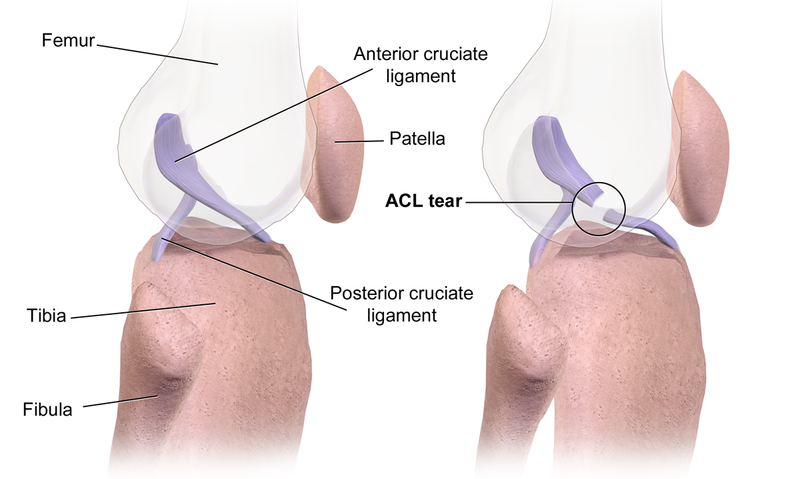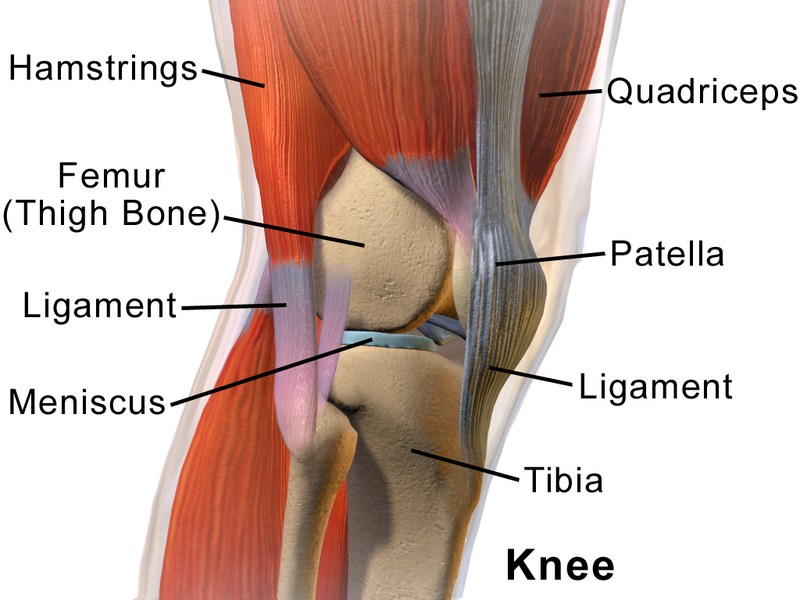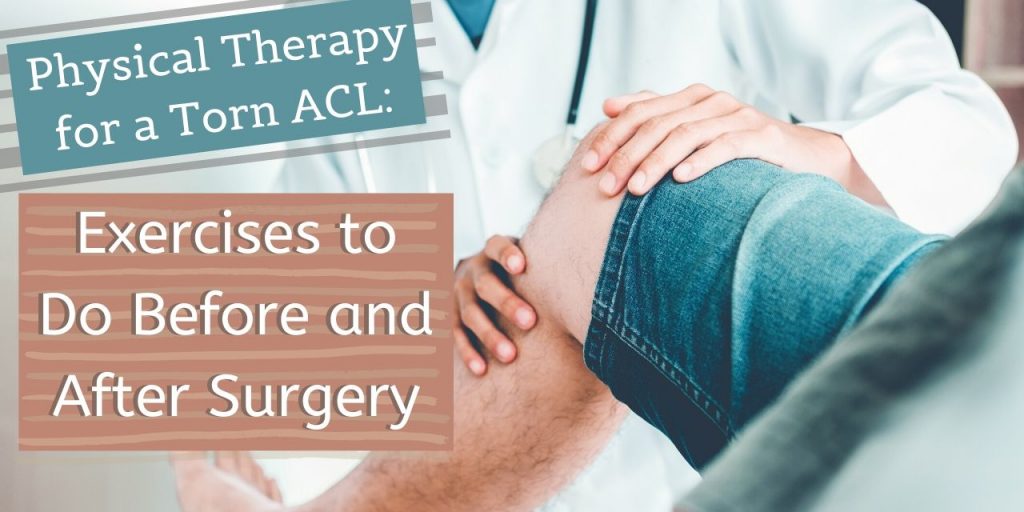ACL injuries are one of the world’s most common sporting knee injuries. They can be devastating and affect you for the foreseeable future. Treatment such as physical therapy is vital to ensure the best possible outcomes from any type of ACL injuries. Below will be a comprehensive guide about what ACL injuries are, how they occur and how they are managed.
ANATOMY OF THE ACL
Before discussing management for ACL injuries, let’s go through its anatomy. The ACL is a ligament comprised of intertwining collagen fibres located the knee joint. It originates from the end of the femur (thigh bone) and connects to the beginning of the tibia (shin bone).

Source: https://commons.wikimedia.org/wiki/File:ACL_Tear.png
Image 1. Visual representation of an intact and ruptured ACL in the knee.
The ACL acts as one of the main supporting structures for the knee joint. Like a strong piece of rope, the ACL resists forward shearing, hyperextension and rotational forces through the knee. Movements such as pivoting and changing directions rely on structures such as the ACL to help stabilise the knee(s).
Although the ACL is crucial for knee stability, there are numerous other supporting structures in the knee. They are divided into active structures. Active structures such as muscles require energy to support the knee and can be consciously strengthened. Whereas, passive structures such as ligaments and meniscus are always ready to support the knee however cannot be specifically strengthened. These include:
- Passive structures
- Posterior cruciate ligament (PCL)
- Medial collateral ligament (MCL)
- Lateral collateral ligament (LCL)
- Meniscus (medial and lateral)
- Active structures
- Quadriceps
- Hamstring
- Calf (mainly the gastrocnemius)

https://commons.wikimedia.org/wiki/File:Blausen_0597_KneeAnatomy_Side.png
Image 2. Visual representation of the knee’s anatomy and structures.
ACL Injuries
Usually, ACL injuries range from small tears of the fibres to full ruptures or breaks. With roughly 120,000 ACL injuries every year in the USA, its one of the most common knee injuries and comes with potentially long-lasting effects. These can be classified within 3 categories which are detailed in table 1. These classifications describe the severity of the injury, symptoms and consequently how they will be managed.
|
ACL Injury Classifications |
Rehabilitation guidelines |
|---|---|
| Grade 1 |

